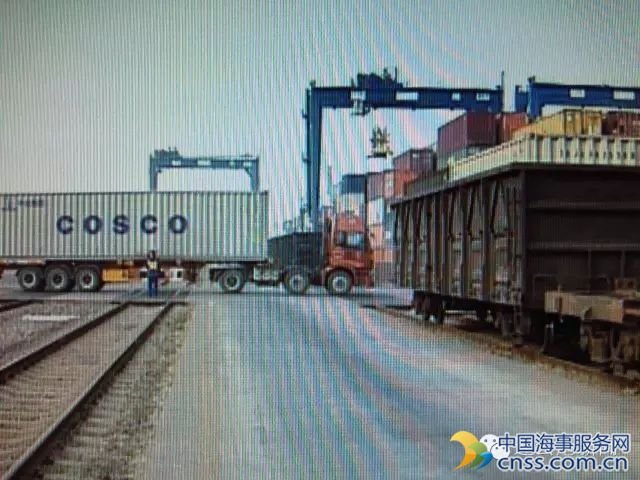Singapore MFM mandate splits delivered bunker fuel market by parcel size

The Singapore spot delivered bunker fuel market has now, more than ever before, been broadly categorized in terms of parcel size, as sellers realign their focus in view of margins narrowing after Singapore rolls out its mass flow meter mandate.
This is one of the more perceptible consequences of Singapore making it compulsory at the start of 2017 for sellers to use MFMs when making their bunker fuel deliveries, industry sources said this week.
Suppliers and traders of spot delivered bunker fuel have increasingly — especially since the start of the year — categorized themselves to focus on demand depending on the parcel size.
The cost of bunker fuel typically varies — as has been the case traditionally — depending on among other aspects, the volume, laycan and credit terms.
Within this realm, a new dimension to come to the fore with the advent of compulsory MFM delivery is for sellers to focus only on inquiries of a specific volume.
Singapore spot delivered bunker fuel market is now classified among sellers in terms of demand for parcel sizes less than 1,000 mt, between 1,000 mt and 2,000 mt, and 2,000 mt and above, said traders.
“Some of the major suppliers of delivered bunker fuel have been quite competitive in terms of their pricing. Fortunately for the relatively medium-sized and smaller suppliers and independent traders, their focus has generally been on parcel sizes over 2,000 mt and certainly not anything below 1,000 mt,” said a trader. “So this has allowed many others like us to focus on inquiries for [volume] less than 1,000 mt.”
The price spread between a parcel size of less than 1,000 mt of 380 CST bunker can be $2-$4/mt higher than a parcel size of 1,500 mt or more, depending on the delivery dates, traders have said.
“With the implementation of mass flow meters, barging costs aren’t what it used to be. Margins have come under pressure. So the focus now is on being able to efficiently turn around your barge as many times as you possibly can,” said a trader.
“Efficient logistics planning is the new mantra in the MFM era. For a barge operator or supplier, I would say ideal operational efficiency would be if the barge can be turned around about 10 times a month, or once every three days. So if you have a 5,000-mt capacity barge, the logical choice for a seller would be to stem two 2,500-mt parcels instead of 10 parcels of 500 mt each,” a consultant at a Singapore-based MFM consultancy and inspection services company said Thursday.
In an attempt to optimize operational efficiency, Singapore bunker sellers are now also increasingly concluding “package deals” with buyers, a practice that, prior to the mandatory implementation of MFMs, has been less common.
It involves selling a relatively higher volume of spot bunker — typically 2,000 mt and above — that the buyer would lift in two or more parcels.
MFM IMPLEMENTATION HAS NOT IMPACTED SINGAPORE BUNKER PRICES
Leading up to the end of 2016, Singapore bunker pricing after the implementation of mandatory delivery using MFMs was an area of ambiguity for the market.
Market participants, by and large, thought prices in Singapore would rise on higher operating costs as a result of which there was also speculation that some share of Singapore demand would drift away to outer port limit bunkering and to neighboring ports.
A month into the implementation of MFMs however, both ex-wharf and delivered 380 CST bunker differential to the Mean of Platts Singapore 380 CST high sulfur fuel oil assessments and the 380 CST delivered to ex-wharf bunker spread showed no signs of an upswing.
Spot daily 380 CST ex-wharf bunker premium to the MOPS 380 CST HSFO assessments averaged $4.30/mt in January, down from $4.44/mt in December 2016 and $7.14/mt in January 2016, S&P Global Platts data showed.
Spot daily 380 CST delivered bunker premium to MOPS 380 CST HSFO assessments averaged $9.25/mt in January, down from $9.65/mt in December 2016 and $13.16/mt in January 2016.
The spread between delivered and ex-wharf 380 CST bunker averaged $4.95/mt in January, down from $5.20/mt in December and $6.03/mt in January 2016, Platts data showed.
Premium of 380 CST ex-wharf bunker to MOPS 380 CST HSFO assessments rose to a 10-month high of $6.78/mt on December 30, 2016 on tight availability, Platts reported January 3.
Ex-wharf suppliers were holding on to oil to sell on a delivered basis after the holiday weekend in anticipation that the delivered premium to MOPS 380 CST HSFO assessments would strengthen after bunker delivery using MFMs became compulsory in Singapore from January 1, Platts reported then quoting traders.
Market sources also quashed skepticism that demand was likely to shift to neighboring ports citing competency advantage that the world’s largest ship refueling destination offers as compared to neighboring ports.
“I don’t think there will be any demand shift away from Singapore. Buyers would realize that operational efficiency aspects would outweigh any cost advantage that may seem probable if bunkering in neighboring ports,” said a trader.
“Singapore is the pricing hub. Most ports within the region price off Singapore. If prices were to rise here, it would impact prices within the region too,” said another trader to insinuate MFM implementation has had little impact in terms of a demand shift away from Singapore.
Source: Platts
HEADLINES
- Do shipping markets want Biden or Trump for the win?
- All 18 crew safe after fire on Japanese-owned tanker off Singapore
- Singapore launching $44m co-investment initiative for maritime tech start-ups
- Cosco debuts Global Shipping Industry Chain Cooperation Initiative
- US warns of more shipping sanctions
- China continues seaport consolidation as Dalian offer goes unconditional